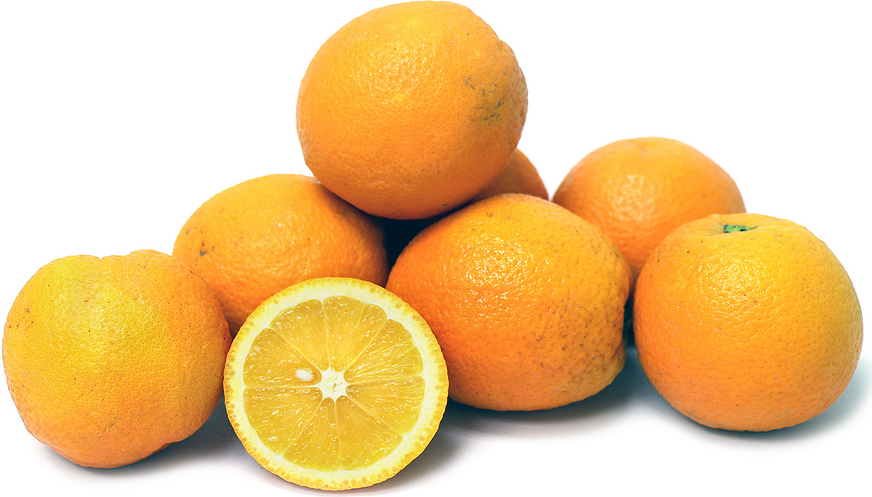


Lima Oranges
Estimated Inventory, lb : 0
Description/Taste
Lima oranges are small to medium in size, averaging 6-8 centimeters in diameter, and are round to semi-lopsided in shape. The medium-thick rind is bright orange with a leathery, pocked texture due to the presence of many oil glands, and these glands contain fragrant oil. Underneath the rind, the white pith clings tightly to the flesh and is spongy with a cotton-like texture. The pale orange to yellow flesh is divided into 8-10 segments by thin, white membranes, contains a few cream-colored seeds, and is soft, tender, and juicy. Lima oranges are aromatic with a perfumed scent and are acidless which creates a sweet flavor.
Seasons/Availability
Lima oranges are available in the late winter through early spring.
Current Facts
Lima oranges, botanically classified as Citrus sinensis, are an acidless variety growing on evergreen trees that can reach up to ten meters in height and belongs to the Rutaceae or citrus family. An early-season cultivar, Lima oranges are favored in the Mediterranean and Brazil for their sweet flavor and are largely localized to their growing region due to the lack of acid which shortens storage life. The oranges are predominately used for fresh consumption and are also used for juicing.
Nutritional Value
Lima oranges are high in vitamin C and also a good source of vitamin A, potassium, folate and fiber.
Applications
Lima oranges are best suited for raw applications as their sweet flavor is showcased when consumed fresh, out-of-hand or juiced. The fruit’s low acidity balances well with naturally tart foods and can be used to flavor cakes, tarts, and muffins. Lima oranges can also be segmented and consumed as a stand-alone snack, tossed into fruit bowls, used as a garnish, or candied for extended use. A Brazilian baked good known as the brigadeiro, a cross between the truffle and a bon-bon, is often flavored with the sweet orange. Lima oranges can also be juiced and combined with lemon and lime juices for a refreshing beverage or mixed with champagne for a sweeter mimosa. Lima oranges pair well with rhubarb, cranberry, lemon, gooseberries, and tart cherries. The fruits will keep for 1-2 weeks in the refrigerator.
Ethnic/Cultural Info
Lima oranges are predominantly cultivated in Brazil where they make up approximately ten percent of the oranges produced, and this variety is consumed domestically due to their short shelf life and lack of acid. In Brazil, Lima oranges are used for immediate fresh consumption and are favored for fresh eating and juicing. They are also referenced in local art and culture. A fictional novel by José Mauro de Vasconcelos called Meu Pé de Laranja Lima, which translates to "My Sweet Orange Tree" chronicles the adolescence of a young boy and his affinity for a special sweet orange tree.
Geography/History
Lima oranges are native to China and were spread throughout the world’s tropical and semi-tropical regions via explorers and trade expeditions during the 15th and 16th centuries. Today Lima oranges are most commonly grown and found in local markets in Brazil, the Mediterranean, Egypt, Mexico, Spain, and in small orchards in California and Florida of the United States.
Recipe Ideas
Recipes that include Lima Oranges. One
| Food Network |
|
Sopa de Lima |




